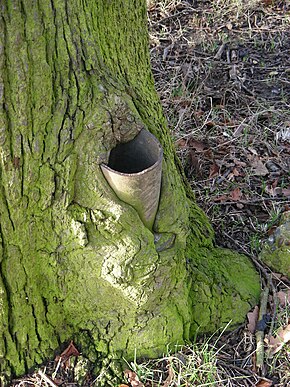increase in root and stem girth or diameter. Occurs at lateral or secondary meristems in some vascular plants such as dicots.
In botany, secondary growth is the growth that results from cell division in the cambia or lateral meristems and that causes the stems and roots to thicken, while primary growth is growth that occurs as a result of cell division at the tips of stems and roots, causing them to elongate, and gives rise to primary tissue. Secondary growth occurs in most seed plants, but monocots usually lack secondary growth. If they do have secondary growth, it differs from the typical pattern of other seed plants.
The formation of secondary vascular tissues from the cambium is a characteristic feature of dicotyledons and gymnosperms. In certain monocots, the vascular tissues are also increased after the primary growth is completed but the cambium of these plants is of a different nature. In the living pteridophytes this feature is extremely rare, only occurring in Isoetes.

